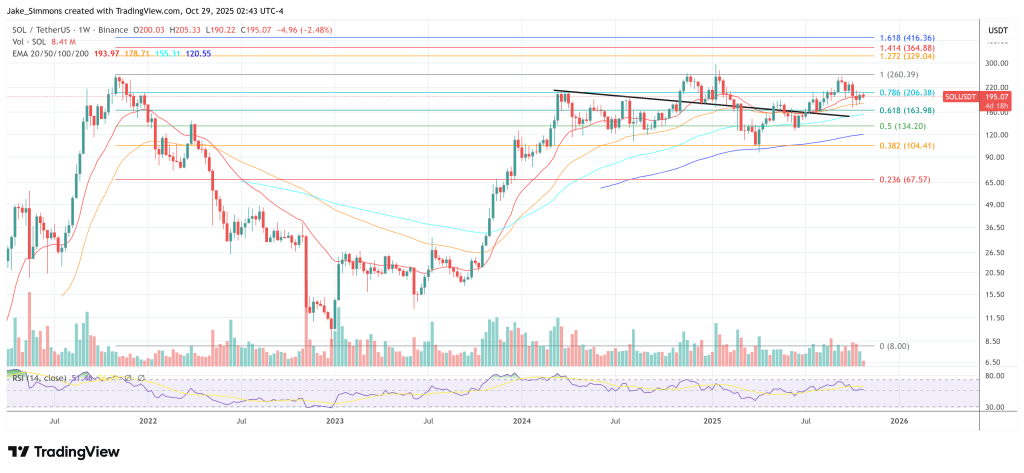
Since providing liquidity to DEXs is more profitable than staking, investors tend to choose yield farming when comparing yield farming vs crypto assets staking. However, are higher APY rates enough to ignore the safety hazards that unsecured liquidity pools offer?
In comparing yield farming to staking, one of the disadvantages of staking is that it doesn't offer much compared to yield farming. Yield farming and staking returns differ, with stakes ranging between 5% and 15% maximum. On the other hand, the returns on yield farming may surpass 100% in some cases. Staking and yield rates are paid out annually. Yet, security-wise, yield farming on newer projects may result in complete loss as developers favor so-called rug pull projects.
The sole determining factor in deciding between farming and staking your assets should be your taste for risks. Yield farming is a better choice if you're confident in your trading skills and believe that gaining money in a short period is risk-worthy. Yield farms offer users the highest possible return on cryptocurrency assets, while liquidity mining mainly focuses on improving the liquidity of the DeFi protocol and maintaining the security of a blockchain network. Yield farming can also be considerably more confusing for beginner investors and may demand regular research and more work. Staking provides lower benefits, but funds can be held for extended periods, and it doesn't necessitate constant attention. So, it all boils down to your experience with the DeFi space and the kind of investor you want to be.
Read on to learn everything you need to know about yield farming vs crypto staking, their differences based on the underlying technologies, and the different ways of staking crypto assets in decentralized applications or protocols or farming them to earn yield.
Decentralized finance can be a powerful tool to enhance financial inclusion worldwide by reinforcing the benefits of using digital assets in the financial sector. The two newly emerging solutions in DeFi trading are crypto staking and yield farming that let crypto investors earn interest and rewards on their crypto assets. With blockchain developers exploring ways to develop passive income opportunities, one of the most considered questions is yield farming vs staking: the differences between them and how each suits the average investor.
Staking
Staking is a technique derived from the proof-of-stake consensus model, an energy-efficient alternative to the proof-of-work model where crypto investors need computational power to solve complex mathematical problems. It's essentially an interesting way of pledging crypto assets as collateral on blockchain networks that leverage the Proof-of-Stake algorithm. Similar to miners using computational power on the Proof-of-Work blockchain network to achieve consensus, users with the highest stakes are selected for validating transactions on the POS network. Only a POS-based blockchain network can yield staking income for an investor. On POS blockchains, staking is the mechanism that confirms transactions and secures the ledger. Rather than spending hardware power and electricity to validate transactions and solve complex mathematical problems, stakers lock up their assets to confirm blocks and nodes. Generally, stakers are users who set up a node personally and join any POS-based network to gain backing as a node validator. Users of centralized and decentralized exchanges stake their assets without handling the technicalities involved in setting up a node. Staker's only responsibility is to provide the assets, and the exchange handles the validation process independently. Stakers can stake multiple assets from one place and avoid the effects of slashing, a mechanism that cuts down a users' assets anytime they act maliciously.
With the surge in DeFi platforms and decentralized exchanges (DEXs), several projects are not allowing users to stake crypto-assets to earn rewards, bypassing becoming a node.&
How Staking Works?
Users must stake a fixed amount or engage in liquidity pools to become validators. Once an asset is locked up, it'll act as a 'stake,' forcing users to confirm transactions in good faith. Each liquidity pool has different conditions and annual percentage yields (APYs), i.e., the annual income of a pool. Before staking, you should note the pool's conditions as some have a fixed timeframe or lower APY rates than others. So make sure to study the different ways of staking your particular cryptocurrency to generate the highest possible passive income from staking.&
Risks In Staking
Staking is not entirely risk-free, but the risks involved are typically low. To name one, certain platforms enforce timelocks, locking stakers' assets for up to an entire year, and an investor will suffer significant losses during this timelock if a bull market suddenly turns into a bear market. Instead of staking on an exchange, you can keep complete control of your coins if you use a staking wallet like the CoinStats Wallet. A platform like CoinStats is perfect for tracking your stakes, and your staked coins never leave your wallet; they only get delegated. However, if you stake via a custodial exchange like Binance, you must deposit your altcoins into the exchange.
Let's look into some of the financial and security risks you can encounter when staking crypto:
- Volatility
If a radical event changes the value of your cryptocurrency, you won't be able to sell it off due to having the coin locked up in staking.&
- Bad Validator
You can lose your money if you stake your coins via a validator, and he decides not to pay you back.
- Wallet or Account Breach
Your exchange account or staking wallet might get hacked.
- Project Failures
A project failure could wipe out your staked coins if you stake in PoS projects that guarantee higher yields but fail halfway.
- Extended Lock-up Periods
Keeping your assets locked with a network that doesn't allow withdrawals till a specific period could affect your holding if the value of your staked crypto assets drops.
It's worth noting that the main goal of staking is to safeguard a blockchain network by improving its security. The more users stake on a blockchain, the more decentralized it is, and it's harder to attack it.
Timelocks and low APY rates, between 5% and 12%, are the main drawbacks of staking. Users risk losing their investments if the market changes without warning from a bull market to a bear market.
Yield Farming
Decentralized exchanges are the primary product of the DeFi market, and they rely on crypto investors willing to provide liquidity to facilitate trades. Yield farming, alternatively known as liquidity mining, is a popular method of temporarily lending crypto-assets to DeFi platforms to earn returns. It offers a flexible approach to generating passive income by depositing crypto-assets into a liquidity pool- a crowdsourced pool of digital assets locked in a smart contract. Cryptocurrency holders can lend their assets and receive rewards when using liquidity pools.
Yield farming is a more modern concept than staking and lets an investor meticulously plan and choose which tokens to lend on what platform. The hype around yield farming began around 2020 when the first DeFi lending protocol -Compound- was launched. Yield farmers deposit their crypto assets for any period they want. A yield farmer will earn a portion of the platform's fees daily for the period he decides to pledge his assets, which can last anywhere from a few days to a couple of months. For example, when a yield Famer provides liquidity to a DEX like Insatdapp, he earns a fraction of the platform's fees; these fees are paid by the token swappers who access the liquidity.
As a result of their high annual percentage yield rates (APY) - between 2.5% and 250%- yield farming pools are immensely competitive. The change in APY rates forces liquidity farmers to switch between platforms constantly. The downside to this constant switching is that liquidity providers (LP) pay gas fees every time they enter or leave a pool. This proves hunting for high-APY during times of high network congestion on the Ethereum network to be almost entirely inefficient.
Although Yield farming is centered around liquidity provision, it can be prone to losses if the markets turn violently bearish; users have to pay gas fees that are higher than usual.
How Yield Farming Works?
In the traditional banking system, banks acting as intermediaries handle financial operations such as borrowing and lending& using "order books." In contrast, yield farming or liquidity mining uses AMM or smart contracts to facilitate crypto trading. To sustain the system and earn interest, liquidity providers pledge funds to the liquidity pool. Other users can borrow, lend, and trade crypto because of the funds offered by LPs to specific pools. All crypto transactions have a service fee dispersed among the LPs, and each lending protocol has a native token distributed to the LPs to incentivize pool funding further.
It's vital to remember that yield farming is relatively new. To reap maximum rewards and determine which one suits you best, you should compare yield farming vs staking and consider all the risks and rewards.
Yield Farming Risks
While yield farming lets you gain the highest yields possible, there are risks associated with it. There are no rewards without risks.
- Impermanent Loss
You can suffer impermanent loss if the liquidity you provide loses its value.
- Price Fluctuations
Tokens can suddenly lose value due to the volatile nature of the crypto market.
- Protocol Glitches
Yield farming relies on smart contracts to facilitate financial operations, and a poorly designed smart contract or protocol can lead to hacks and other malfunctions.
While yield farming can be a profitable passive income generator, it's also a risky business. Ethereum gas fees can wipe out any APY rate you've earned if the market turns wildly bullish or bearish. Consider using yield farm and market monitoring to defend yourself against some of these risks.&
Liquidity Pool
A liquidity pool is a crowdsourced pool of digital assets locked in a smart contract.& It's one of the primary technologies behind the current DeFi Market and is used to facilitate trades between digital assets. Liquidity pools are essential for automated market makers (AMM), yield farming, borrow-lend protocols, on-chain insurance, blockchain gaming, synthetic assets, etc. To create a market, liquidity providers (LPs) add an equal value of tokens to a pool for crypto trading. In exchange for their liquidity, LPs earn rewards from the trades happening in their pool. Anyone can become a liquidity provider, with automated market makers making the market more accessible.
Many decentralized protocols have liquidity pools as their foundation. Bancor was one of the first DeFi protocols to use these pools, but the concept gained attention with the popularization of Uniswap. Other prominent exchanges that use liquidity pools on the Ethereum Blockchain are Curve, Balancer, and SushiSwap. Pools in these platforms contain ERC-20 tokens. Similar equivalents on the Binance Smart Chain (BSC) are Burgerswap and PancakeSwap, with the pools containing BEP-20 tokens.
How Liquidity Pools Work?
Popularized by exchanges such as Bancor and Uniswap, liquidity pools are a highly competitive sector and possibly the most revolutionary technology in the decentralized finance space. Liquidity pools help decentralized protocols operate by providing liquidity, convenience, and speed to those platforms. They also let investors who deposit funds into these pools earn passive income. The funds of these Liquidity providers (LPs) power the DeFi ecosystem.
Liquidity Pools Risks
You need to be aware of some of the risks involved before providing liquidity to an automated market maker.
- Impermanent Loss
You can suffer impermanent loss if the liquidity you provide loses its value.
- Smart Contract Risk
While technically, no middlemen hold your funds when you invest them into a liquidity pool, smart contracts can be considered a custodian of these funds. Your funds could be lost forever if there's a bug or some exploit, i.e., through a flash loan.
Liquidity Mining
Liquidity mining is the process where crypto holders lend assets to a decentralized exchange in return for rewards. These rewards are commonly derived from trading fees traders pay for swapping tokens. In liquidity mining, yield farmers supply pools with crypto assets and earn fees and tokens in return throughout the entire yield farming process. Trading fees average at 0.3% per swap, and the total reward varies based on one's equivalent share in a pool.
Liquidity mining is one of the ways of earning passive income, but similar to the other two approaches; it also comes with risks like project risks, impermanent loss, and smart contract risks.
Top Yield Farms
Now that we've reviewed what you need to know about yield farming and staking, here are some top-yield farms.
Yearn.Finance
Performance score: 8/10
Yearn.finance is a DeFi aggregator that offers great yield farming opportunities while utilizing automation to maximize profits for investors. Yearn uses various products on its platform to bring about the highest cryptocurrency yield possible.
Pros
- Lower fees
- Fully decentralized and secure
Cons
- Several security concerns
- Lack of protocol documentation.
Uniswap
Performance score: 8/10
Uniswap is the second-largest DEX by total value locked, with over $5.5 billion on the platform. The platform allows swaps with Ethereum and several ERC-20 tokens and staking in liquidity pools to provide the swaps. Interest rates on Uniswap vary by pool and market fluctuations.
Pros
- Ample liquidity
- Full transparency and open-source code
Cons
- High trading fees
- No remuneration after liquidity withdrawal
- Supports only Ethereum-based assets.
Aave
Performance score: 9/10
Aave is very popular among yield farmers and ranks as the most popular platform on Ethereum, with over $10 billion in collective assets. Aave allows its users to trade around 20 leading cryptocurrencies, attracting investors looking to maximize profits on their assets.&
Pros
- Huge lending pool
- Stable interest rates for some assets
Cons
- Lacks high incentives
- Past security issues
Curve Finance
Performance score: 9/10
Curve finance uses locked funds better than any other DeFi platform, and its unique market-making algorithm benefits users that provide the platform liquidity and swaps. With a total value of $7.9 billion, Curve finance is one of the largest DEXs.
Pros
- Offers greater rewards via composability
- Secure and efficient
Cons
- High gas fees during heavy traffic
- Inflation threats.
SushiSwap
Performance Score: 8/10&
SushiSwap is primarily known for its DEX but has recently expanded to staking and yield farming solutions. Sushi offers a liquidity pool and trading options on over 1000 pairs, like the Ethereum/Bitcoin, Bitcoin/Litecoin equivalents, and is persistently growing in TVL and volume.
Pros
- Several initiatives like liquidity pools, staking, etc.
- Easy to navigate and use
Cons
- Security concerns
- High gas fees.
Final Thoughts
In conclusion, our review on yield farming vs crypto staking has revealed different approaches to investing crypto assets. Consider all the differences between yield farming vs crypto staking and your crypto investing skills to select the best option to generate passive income for your crypto funds.

You can get bonuses upto $100 FREE BONUS when you:
💰 Install these recommended apps:
💲 SocialGood - 100% Crypto Back on Everyday Shopping
💲 xPortal - The DeFi For The Next Billion
💲 CryptoTab Browser - Lightweight, fast, and ready to mine!
💰 Register on these recommended exchanges:
🟡 Binance🟡 Bitfinex🟡 Bitmart🟡 Bittrex🟡 Bitget
🟡 CoinEx🟡 Crypto.com🟡 Gate.io🟡 Huobi🟡 Kucoin.












Comments